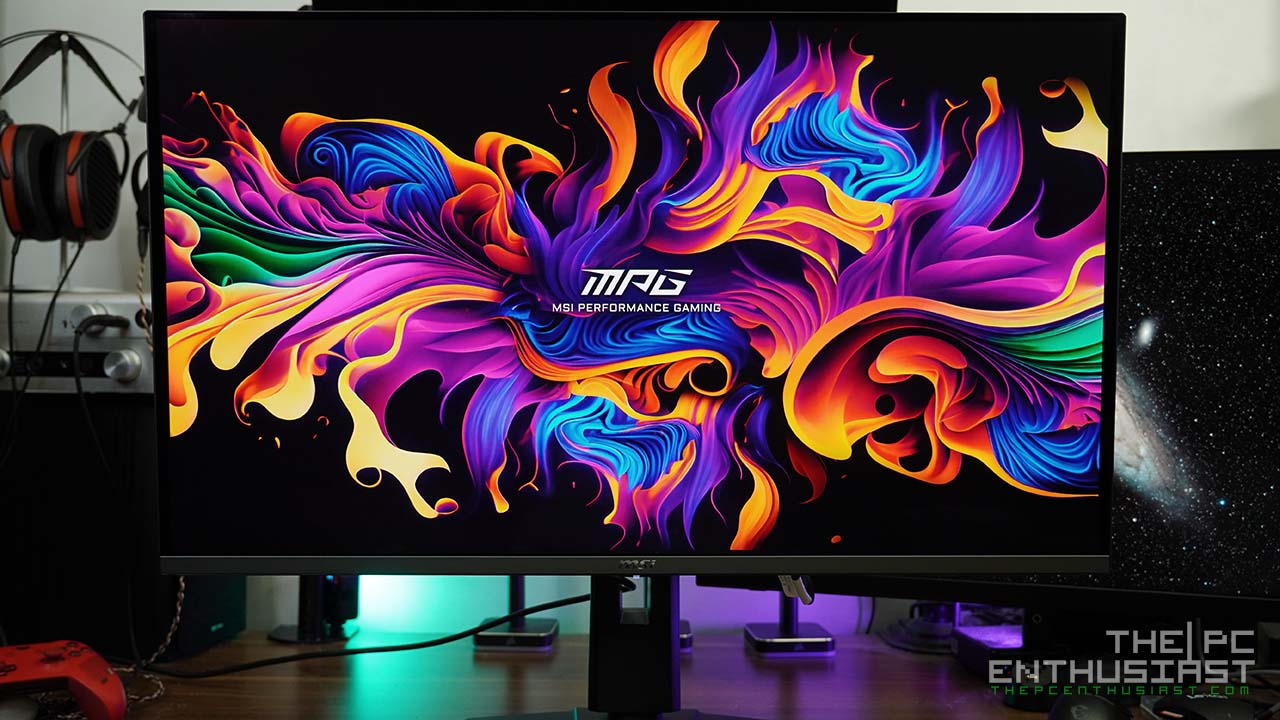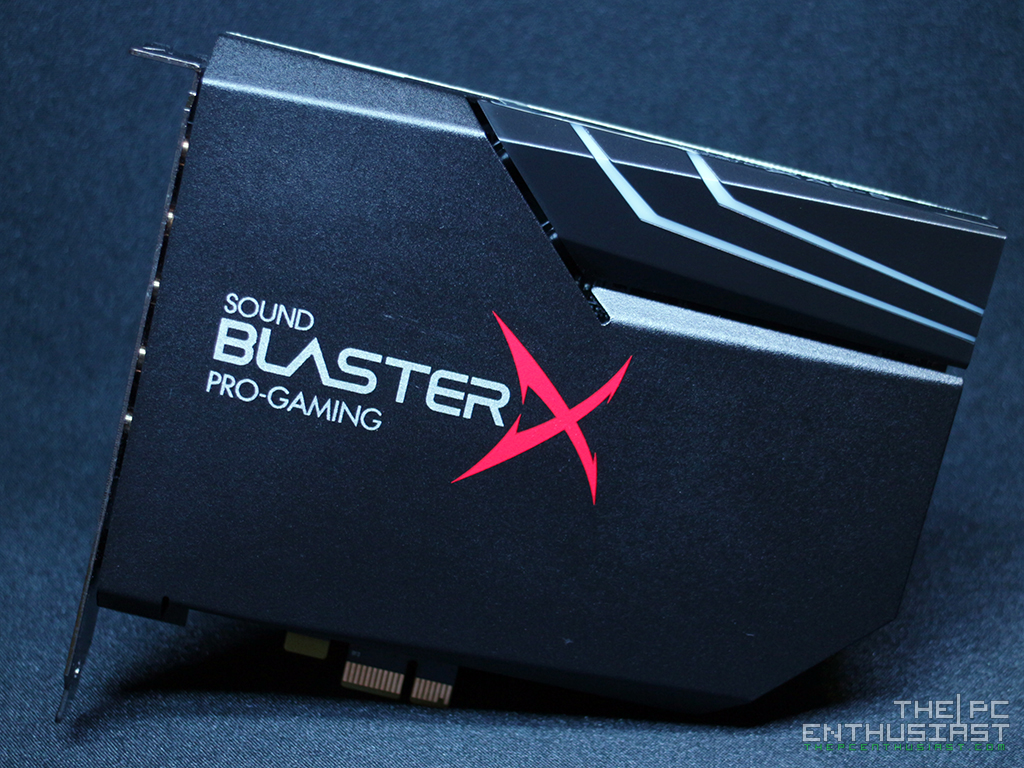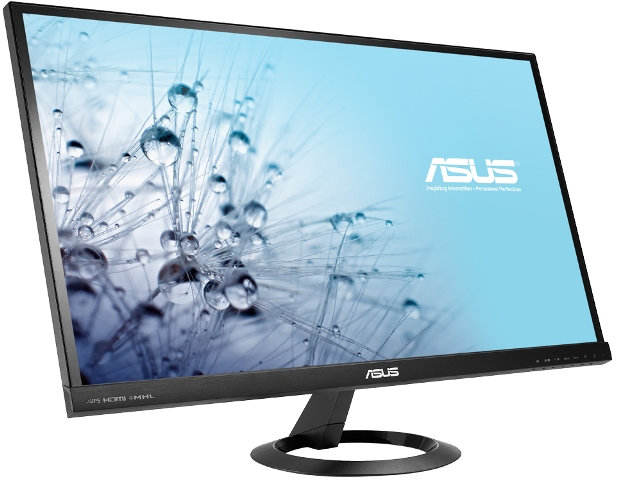Late Q3 last year, Cooler Master announced its flagship Mini LED monitors, the Tempest GP27Q 1440p and Tempest GP27U 4K monitors. Today I’ll share my review of the Cooler Master Tempest GP27U. It is a 4K UHD monitor with a refresh rate of 160Hz and is built with several features, like proper HDR support with local dimming zones and many more. The Cooler Master GP27U is not only designed for gamers or gaming purposes but it is also intended for content creators and productivity purposes. If you’re in the market for a 27″ 4K gaming/productivity monitor, please continue reading our Cooler Master GP27U review below.

Cooler Master Tempest GP27U 4K Monitor Review – With Updated Firmware
Before we begin, I’ll give a heads-up for those who are looking for measurements and numbers. My review will not contain accurate measurements or benchmarks since I lack the tools to measure and gather those data. Instead, my review will focus on my subjective experience using this monitor for several months. For the past five months, I have been using the GP27U as one of my gaming, editing, and media consumption monitors. With that out of the way, let’s start with what Cooler Master’s GP27U offers.
As mentioned, the Cooler Master Tempest GP27U is a 27″ 4K gaming and productivity monitor with a refresh rate of 160Hz. It has a peak brightness of 1200 nits for HDR and 600 nits for SDR. While the GP27U is capable of up to 160Hz refresh rate, Adaptive Sync, including FreeSync and G-Sync, works only up to 144Hz. Also, to date, the GP27U is not yet officially certified as G-Sync compatible or AMD FreeSync Premium Pro certified.
It uses an IPS panel with MiniLED and has 576 local dimming zones. Yes, it has a proper full array local dimming zones, unlike other 1440p or 4k monitors that only have edge lighting. However, 576 may not be enough for the best HDR experience, as I’ll show you later. Nevertheless, it uses a quantum dot enhancement film for better color reproduction. It covers up to 98% of the DCI-P3 color gamut and 99% of Adobe RGB, boasting a delta E of <2.
On paper, it is advertised to offer 1ms of response time or 0.5ms (MPRT). However, its actual response time is somewhere in the 5ms to 6ms. It also has a KVM switch functionality and HDMI 2.1 connectivity with full 48Gbps bandwidth to support the latest consoles, like the PS5 and Xbox Series X, for 4K 120Hz refresh rate without needing DisplayStream Compression.
Below is a specification table of the GP27U, and after that, let’s take a closer look at the monitor.
Cooler Master GP27U Specifications

For the latest pricing and availability: (#ad)
Cooler Master Tempest GP27U 4K UHD HDR monitor is available on Amazon here.
Packaging and Closer Look



The Tempest GP27U’s packaging is quite colorful and reflects Cooler Master’s primary theme color, which is purple or violet. You open the box from the top, and you’ll be greeted with a simple step-by-step instructions on how to unbox and handle the monitor. It was quite easy since connecting the stand to the monitor requires no tools.




Above are photos of the GP27U’s stand and the base. Unlike other monitors, where the leg of its stand is usually a V-shape or curved/angled leg, Cooler Master decided to use its logo as the design of the GP27U’s base. It does occupy space on the table, and depending on your setup, you may want to use a monitor arm for a cleaner look.
Accessories



Included in the box are several cables, including a USB for upstream, USB-C, HDMI, and a DisplayPort cable. It uses a somewhat large power brick and includes several power cables which different plug types. There’s also a quick start guide and a documentation showing that the monitor was factory calibrated.



At the back side of the GP27U, you can see a ring with RGB in it and a couple of lines on the top side with RGB lighting. The monitor does support the standard VESA 100×100, so it is easy to mount in case you don’t want to use the included stand. On the right-hand side is a small d-pad or joystick for powering up the monitor and accessing the OSD. And on the left-hand side is a hole for the Kensington lock.
The I/O Ports
The I/O ports of the GP27U are located below the mount of the monitor. From left to right, the power connector, two USB ports, USB upstream, USB-C, DisplayPort, two HDMI, and a headphone jack. Notice that the USB1 port has a small “service” printed. Whenever you update the monitor’s firmware, that’s where you should insert the USB drive containing the firmware.
Cooler Master has instructions on how to update the GP27U’s firmware on its product page. So be sure to read and follow the instruction before updating the firmware. Updating the firmware is an easy process, but the steps should be followed for a successful update.


With a pixel-per-inch density of 163, the GP27U produces very sharp and clear text and images. It isn’t easy to see the individual pixel not unless you really get close to the monitor or use a magnifying glass or camera. If I were to put a 27″ 1440p and 27″ 4K monitor, the pixels on the 1440p are (very) obvious. And you can see the icons’ pixels and edges are not sharp or smooth on the 1440p compared to that on the 4K monitor. It’s simply crisp, clear, and clean on the 4K.
I’m not a huge fan of the RGB lighting at the back. Although it may add to its aesthetics, the lighting is not that bright to be noticeable if you put the monitor against a wall; not unless you turn off all the lights.
OSD Panel




With the early version of the GP27U’s firmware, it wasn’t that responsive. And if the source is offline or there is no active signal from the source, the OSD will not show up at all. Thankfully, this was fixed with the newer firmware update. The latest as of publishing this review is version 1.3.1.
To access the GP27U’s OSD, you’ll have to press the joystick at the back. Pressing the joystick is not equivalent to “enter” or input, unlike most monitors I have tried. To “enter” or input the changes, you’ll have to press right on the joystick, which can be a bit confusing, especially if you are used to pressing the button as the enter command.




There are six main menus on the OSD panel, and from there, you can adjust and change settings based on your preference. One option not available on the original firmware was the ability to adjust the local dimming’s strength. So, if you encounter or experience some sort of flickering, you may want to adjust this setting.
In my case, I only encountered flickering once, and I wasn’t on a game. It was just on the Windows desktop when the flickering happened. I’m not entirely sure what caused that, but I did not encounter that issue again and have been unsuccessful in replicating that issue since.




The GP27U’s joystick also has some shortcuts. If you don’t press the button and simply press upwards or downwards, you’ll be able to quickly access some options, like input/source, KVM, picture mode and some gaming-related options.
Subjective Testing and Experience
As mentioned earlier, I have been using this monitor for about five months, and when I first got it, it came with the first version of the firmware. Luckily, since I got my unit early this year and not last year, I didn’t wait long for a new firmware update.
You might have read/watched some reviews of the GP27U, and as mentioned by the early reviewers of the GP27U, the initial firmware was buggy. For instance, you can’t use HDR while variable refresh rate is enabled. It’s either HDR but no high refresh rate or refresh rate but no HDR. After the initial firmware, you can do HDR with high refresh rate. Cooler Master also fixed some bugs and added additional options on the OSD with the latest 1.3.1 firmware version.
Backlight Bleed


My GP27U has minimal backlight bleed, and it seems that (grey) uniformity is okay too. When local dimming is enabled, black uniformity looks great since only the area where light is needed its backlight is turned on. However, as I observed, 567 local dimming zones may not be enough for the best experience.
The center of the screen looks clean, and I don’t see any observable dirty screen effect. Although if you look at the second photo, where most of the screen is white or light, the edges seem a bit darker, as if there is a very light vignette effect.
HDR and Media Consumption



HDR performance looks great and colorful, and I think it may be a little bit too saturated. Without an accurate monitor calibrator, I can’t tell how (over) saturated the colors are or if they are indeed over saturated. My point of reference and comparison is the MSI Optix MPG321UR-QD, which is a fantastic 4K 144Hz monitor with fantastic color accuracy and reproduction. It doesn’t have true HDR capabilities, but its SDR capabilities are excellent. To be clear, I am comparing their SDR to SDR performance, not HDR to SDR.



Nevertheless, the Cooler Master GP27U can provide an enjoyable HDR experience. With the latest firmware update, adaptive sync can be enabled alongside HDR.


As I mentioned earlier, 576 of local dimming zones may not be enough. You’ll notice some blooming in certain challenging situations, where the background is mostly black, and some small particles or objects need to be lit up.
The blooming is not very obvious in the first photo above, but you can observe it in the second photo. The empty space surrounding the floating particles should be completely black, as the image shows a completely transparent bottle with some sort of liquid and particles floating and moving inside the bottle.
If you sit right in front of the monitor, that blooming effect is minimal. However, looking at it from an angle, the blooming effect is more pronounced and can be distracting.
Viewing Angles


Here we have a couple of scenes; you can see that if we view the monitor directly and sit right in front of it, there is minimal blooming effect. However, if we view the monitor from an angle, the blooming effect becomes very obvious and can be quite unpleasant to look at.


If you are watching a movie or viewing something and you’re sitting right in front of the monitor, then it is not going to be an issue. However, if you’re watching a movie with someone else, chances are you, or the other person will be looking at the monitor at an angle. And whoever views the monitor from an angle may observe some blooming or less accurate colors.
Overall, the HDR experience on the GP27U is good as it offers a true HDR experience with around 1000+ nits of brightness. However, I do think that 576 of local dimming zones are not enough, and perhaps only an OLED monitor can give an excellent HDR experience. Nevertheless, 576 is better than the 96 local dimming zones on Sony’s INZONE M9; making the GP27U a better monitor for consoles like the PS5.
Gaming Experience




Now, the gaming experience on the Tempest GP27U is quite fantastic. While its HDR experience left me wanting more, I think the gaming experience makes up for it. Thanks to its high pixel-per-inch density, the images are crisp, clear, and sharp. The vibrant colors are an absolute eye candy for exploring a colorful world with vast scenery and landscape.
With its up to 160Hz refresh rate, playing games with the GP27U is a treat. Motion is smooth, and there’s no observable tearing or stuttering. Response time is also very good, and no delay or lag was observed as well.
Gaming with HDR enabled is a different story. Enabling HDR in Shadow of the Tomb Raider, the colors seem fine, although a little bit washed off for my taste. But when I enabled HDR on The Division 2, the colors were off. I’m unsure if it’s due to Window’s implementation of HDR or something else, but HDR gaming can be a hit or miss.
Overall, I don’t have any issues when gaming with the GP27U. Playing games with it is an excellent experience. On the flip side, if you are editing photos or videos, the GP27U is also an excellent monitor for productivity. Unless you are working on a serious project requiring a professional-grade monitor with a specific need, the GP27U will serve most of us well enough.
Pricing and Availability
The Cooler Master Tempest GP27U is now available and comes with a manufacturer’s suggested retail price of $999. For the latest pricing and availability, kindly check out the link below. (#ad)
Cooler Master Tempest GP27U 4K HDR Quantum Dot MiniLED monitor is available on Amazon here.
Cooler Master Tempest GP27U 4K HDR Monitor Review Conclusion
I think Cooler Master has nailed it with the Tempest GP27U. It’s a versatile monitor, great for gaming and productivity, and good for HDR consumption. It offers up to 160Hz refresh rate; however, VRR is only available up to 144Hz. But for a 4K monitor, 144Hz is enough. Depending on the game you are playing, 120 or 144fps can be difficult to achieve. You’ll need the best RTX 4090 GPU to push this monitor and render all those frames. Unfortunately, the 4090 is quite an expensive GPU, and other graphics cards are also great for 4K gaming.
Some early reviewers gave the GP27U a not-so-good feedback, if you have noticed by now. This is mainly because of the firmware. As I mentioned, with its first release, you can’t use HDR together with Adaptive Sync. But with the newer firmware, you can do that, and some bugs are also fixed. Had only Cooler Master waited for a few more months and released the monitor with the new firmware, I think it would have gotten much better feedback from the community.
When it comes to build quality, overall, it is a sturdy monitory, and its stand is pretty solid. However, I think its stock stand could use a lesser area or footprint instead of the large Cooler Master logo. The RGB lighting on the back is okay but a bit uninspiring. It also has a built-in speaker, but using a dedicated speaker is much better. They should have removed the built-in speaker and RGB lighting to reduce the price further.
At the end of the day, Cooler Master’s Tempest GP27U 4K HDR monitor is an excellent gaming and productivity monitor, sullied by its initial firmware and rushed release. Again, had only Cooler Master released it at a later date with fully functioning features, it would have received a much more positive reception. Nevertheless, with the latest firmware, it is a much better monitor than initially released, and I don’t see any reason why I can not recommend this.








Actually it’ll do 160Hz with VRR – they fixed it in the first firmware update.
I’ve been using it with a PC and a PS5 since November and I really like it. Calibrated results are excellent – I’m happily using it for fairly serious photo editing.
The only caveats for Windows gaming are that you should use HDMI 2.1 (caps out at 144Hz), and only enable auto HDR if you know your game doesn’t have native HDR support. Haloing isn’t bad if you sit head on – it’s dramatically better than my 1st gen mini-LED (which had 1152 zones).
My only issue now is source detection – if I’m switching between my laptop and desktop, or desktop and PS5, it often fails to detect a signal.
Yes, source detection can be a bit of a pain. Currently, this monitor is connected to my work rig (as a secondary monitor) and my test bench (as the main).
So whenever I try to switch from one source to another, it’s not the smoothest experience.
I already informed CM about this, but I don’t know if they will further release a new firmware to improve its responsiveness.